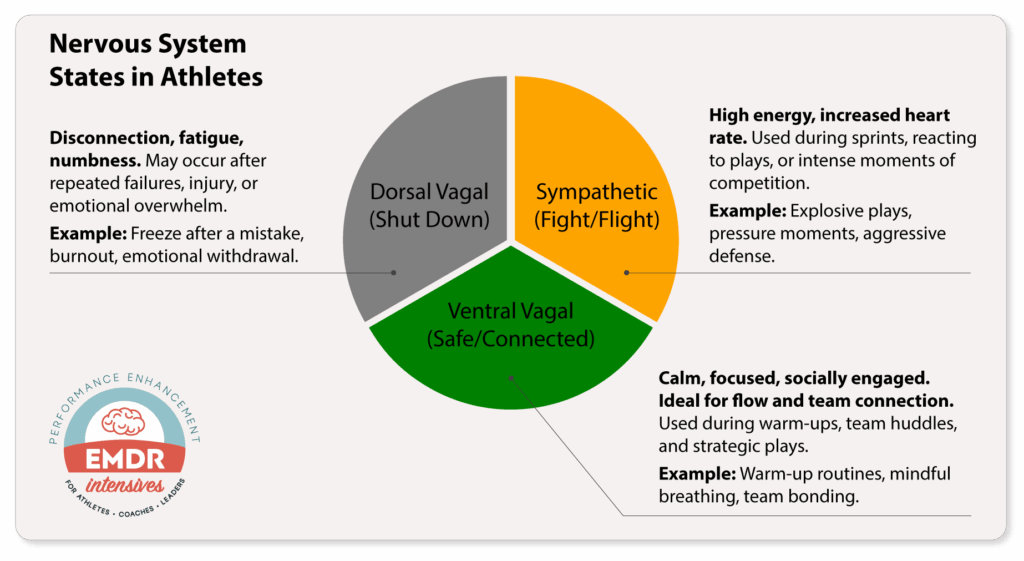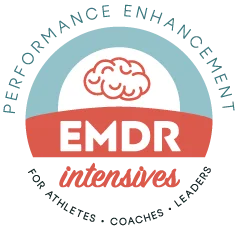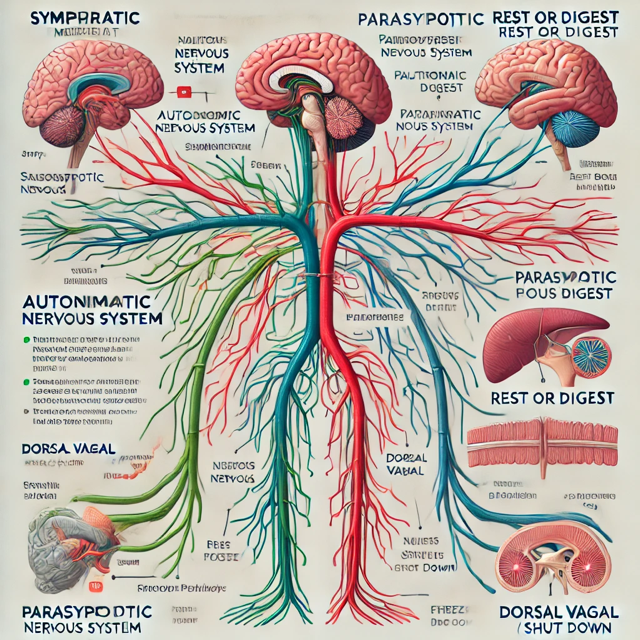Summary points
- Change and healing are possible when we support the nervous system.
- A healthy nervous system moves fluidly between different states.
- Polyvagal Theory explains how our body responds to stress and connection.
- Awareness of your body’s cues is the first step to nervous system regulation.
- EMDR Therapy is a powerful tool to help process trauma and improve performance.
Embracing change and nervous system healing
In honor of Mental Health Awareness Month, I’ve been reflecting on one of the most fulfilling aspects of being a therapist: witnessing transformation. The human body and brain are beautifully designed to heal. But sometimes, trauma, stress, or disconnection disrupt that natural healing process.
When our nervous system feels safe and connected, it opens up space for us to see ourselves and our experiences differently. This secure attachment, whether in therapy or relationships, allows change to happen. It’s a powerful, awe-inspiring process I’m privileged to witness often.
A personal story: What driving taught me about the nervous system
Having teenagers learning to drive in busy city traffic gave me a surprising metaphor for nervous system regulation. Just like a car’s gas and brakes, our autonomic nervous system (ANS) shifts gears depending on our environment. A smooth ride feels better than a jerky one—and the same goes for our emotional responses.
Our ANS manages essential functions like breathing, heart rate, and digestion without our conscious input. However, we can influence it. Polyvagal Theory, developed by Dr. Stephen Porges, gives us a map of these nervous system states:
Understanding polyvagal theory: The three states
- Ventral Vagal State (Parasympathetic): Calm, engaged, connected. This is the optimal state where we feel safe and socially engaged.
- Sympathetic State: Fight or flight. Energy rises, heart rate increases, and focus narrows. It’s helpful in short bursts for survival or productivity.
- Dorsal Vagal State (Parasympathetic Shutdown): Freeze or collapse. Overwhelm leads to disconnection, numbness, or hopelessness.

A healthy nervous system transitions fluidly between these states. It doesn’t get stuck but returns to ventral vagal as the baseline.
Practices to regulate your nervous system
Creating awareness and space for nervous system work can empower personal change. Here are practical tools to support a healthier nervous system:
- 🧘♂️ Breath Work: Breath regulates the nervous system. Try HeartMath for a science-backed approach to heart-brain coherence. HeartMath Website
- 🤝 Connect with Others: Connection through conversation, eye contact, or safe touch engages the ventral vagal system.
- 🧠 Daily Body Awareness: Try Yoga Nidra or Non-Sleep Deep Rest (NSDR) to increase mind-body awareness. Watch NSDR Practice
- 📚 Learn More: Explore Deb Dana’s work for user-friendly resources on Polyvagal Theory. Rhythm of Regulation
- 🎯 Set a Goal: Choose one nervous system-supportive practice this month and share it with a friend or loved one.
The power of EMDR therapy for nervous system change
One of the most effective tools I use in therapy is EMDR (Eye Movement Desensitization and Reprocessing). EMDR Therapy helps athletes, coaches, and leaders process stuck experiences that disrupt nervous system flow. These stuck patterns might be caused by:
- Injury
- Poor performance
- Anxiety
- Conflict
- Trauma
EMDR Therapy uses bilateral stimulation (eye movements, tapping, or sounds) to activate both brain hemispheres. This promotes neuroplasticity—the brain’s ability to change and form new neural pathways. It also helps decrease emotional distress and build positive, adaptive beliefs.
By working directly with the nervous system, EMDR enables clients to return to their ventral vagal state, enhancing resilience, clarity, and performance.
Learn more about EMDR Therapy:
Change is possible. Our nervous systems are designed to heal—and when we support them with awareness and intentional practices, transformation truly can happen.




